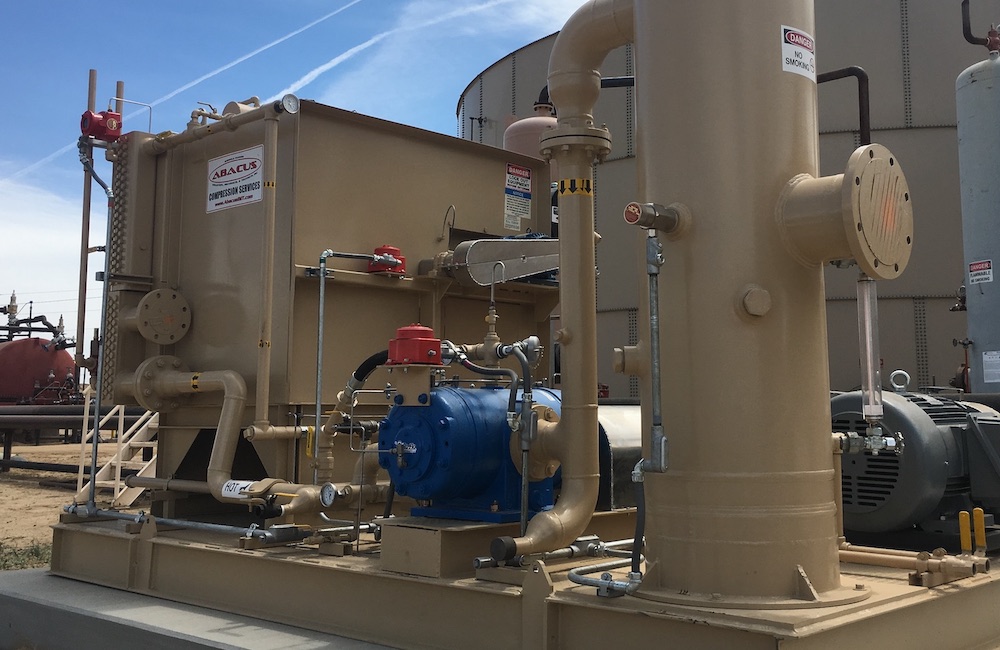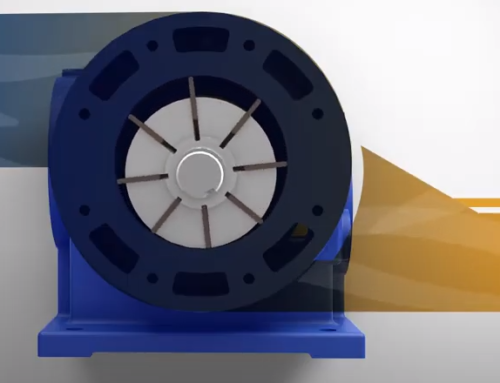Rotary vane compressors are known for their ability to handle saturated and corrosive gases. Their durability in tough environments is why they are commonly chosen for vapor recovery, flare gas and various industrial process gas applications. Like any piece of machinery, proper maintenance and upkeep is essential for longevity. The two most important factors for sliding vane compressor longevity and operation uptime are:
- Preventing liquids from entering the compressor
- Proper lubrication
Liquids (Condensate)
Different gases condense at different temperatures and pressures. Variability in process gas, and fluctuations in surrounding/atmospheric conditions, can change pressures and temperatures, causing components of the gas stream to condense into a liquid. Removal of these liquids from the gas stream, prior to entering the compressor, is essential.
Using a Separator Vessel
The best way to accomplish liquid removal is with a separator vessel located just upstream of the compressor. The separator should be engineered to handle to the appropriate gas pressure and flow rate, as well as the greatest potential liquid drop out volume. A good separator design may include:
- A mesh pad or demister pad, which is typically woven stainless-steel wire. As the gas passes through the mesh, the liquid droplets collide with the wires and attach to the wire’s surface. The droplet will grow as more droplets collide until the drop is heavy enough to fall to a liquid collection section of the vessel.
- A drain pump to effectively remove the collected liquids from the vessel.
- Liquid level controls to cycle the drain pump when needed and to provide protection if the level gets too high.
- Pressure differential gauge across the mesh pad to assist in determining when the pad needs cleaning or replacement.
In addition to the separator, there are a couple of other best practices that should be considered during the compressor package design phase to help keep liquids out of the compressor:
- Include a drip leg with a drain valve very near to the compressor inlet. The drip leg gives condensate one more chance to collect prior to entering the compressor. A drain valve on the bottom of the drip leg can be used to confirm that no liquid has collected in the compressor prior to start/restart.
- Design the gas piping so that condensate will have a chance to drain away from the compressor, rather than into the compressor. Elevating the compressor so that it is not the low point of the process piping needs to be considered.
Lubrication
The sliding vane compressor’s once-through lubrication system continuously injects small droplets of fresh lubricating oil that protects the compressor internals from the process gas. The proper lubricant injection rate is critical to longevity and is determined by:
- The size of the compressor and the number of lube points
- The compressor operating speed
- The composition of the process gas
If you need help calculating, use our lubrication rate calculator we’ve made available.
Utilizing the proper oil viscosity is also an important factor in providing proper compressor protection. Ro-Flo Compressors viscosity recommendation is based on the compressors gas discharge temperature and is as follows:

Additional lubrication system guidance can be found in Ro-Flo’s Installation, Operation and Maintenance Manual.
Ready to get started with Ro-Flo?
Proper package design can keep slugs of liquid from entering the compressor, keeping it healthy. Maintaining appropriate lubrication will keep your compressor running for years to come. For rotary vane solutions, contact Ro-Flo Compressors today.



